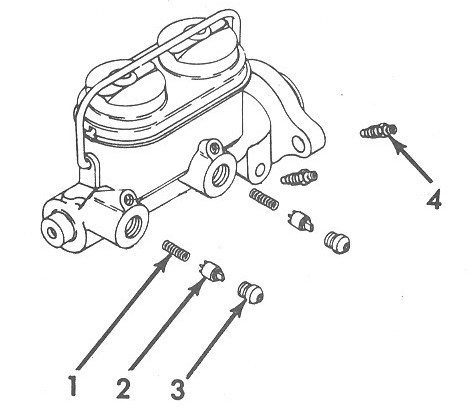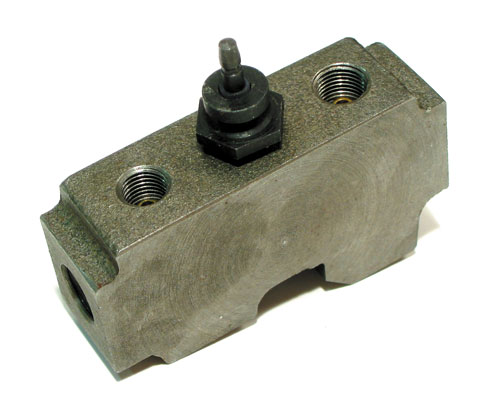
|
Drum brake master cylinder showing the springs(1), residual pressure valves(2), brass tube seats(3), and bleeders(4). |
| C R G | CRG Reports | Exterior | Engine | 1967 Model ID |
| Numbers Decode | General Info | Interior | Transmission | 1968 Model ID |
| Drivetrain Decode | Options | Underhood | Chassis | 1969 Model ID |
© 2010-2025, Camaro Research Group
Camaro Brake Valves
Author: John Hinckley

|
Drum brake master cylinder showing the springs(1), residual pressure valves(2), brass tube seats(3), and bleeders(4). |
|
The inlet port side of the distribution block, with the terminal connection for the differential pressure switch. |

|
|
|